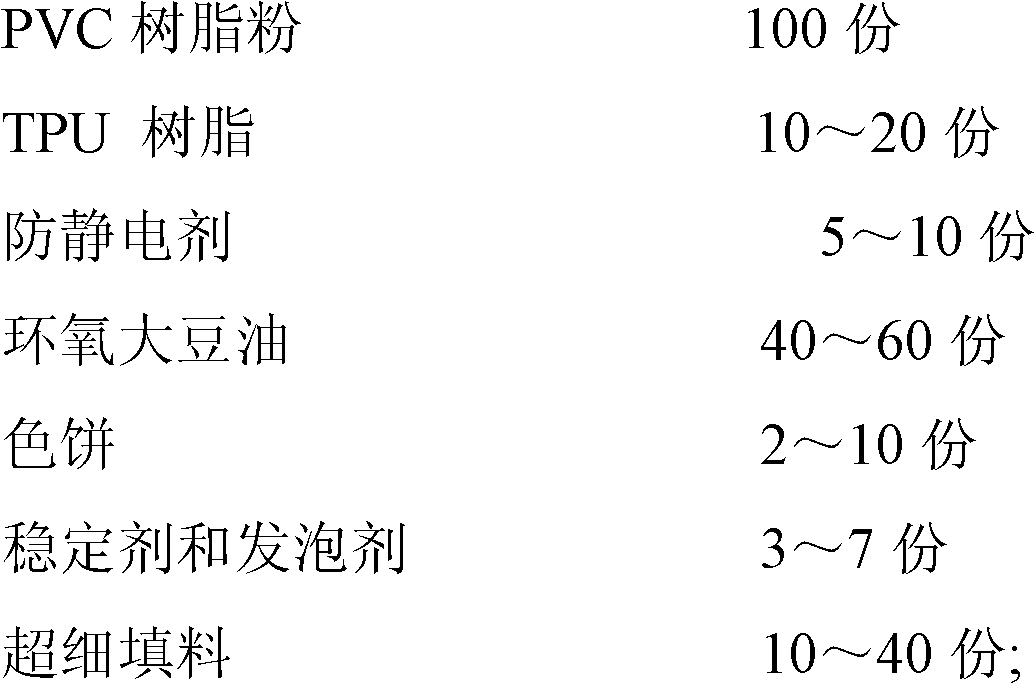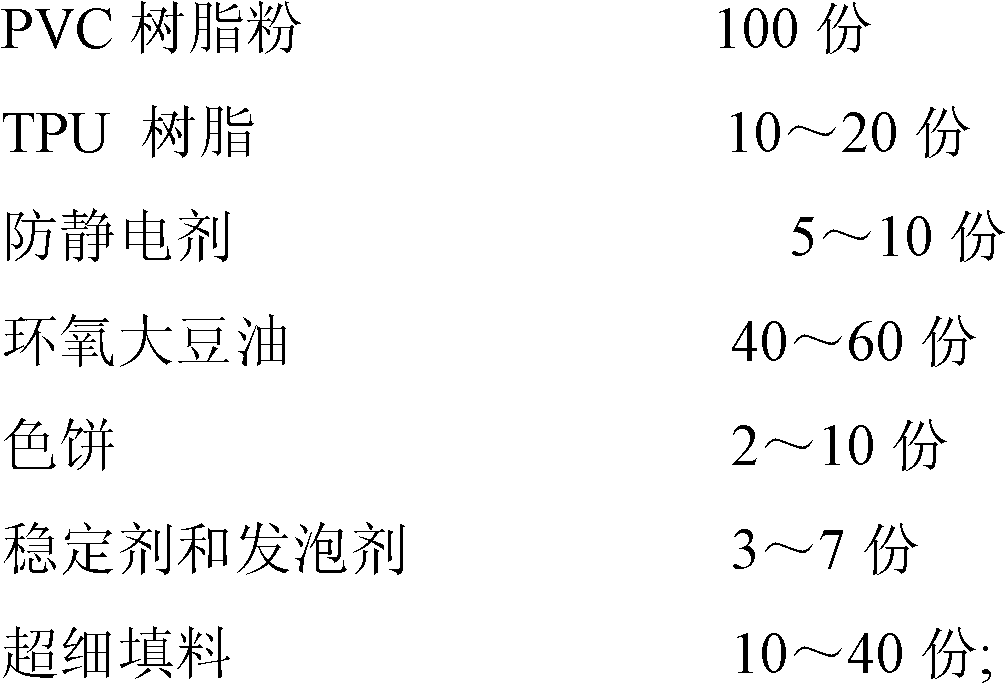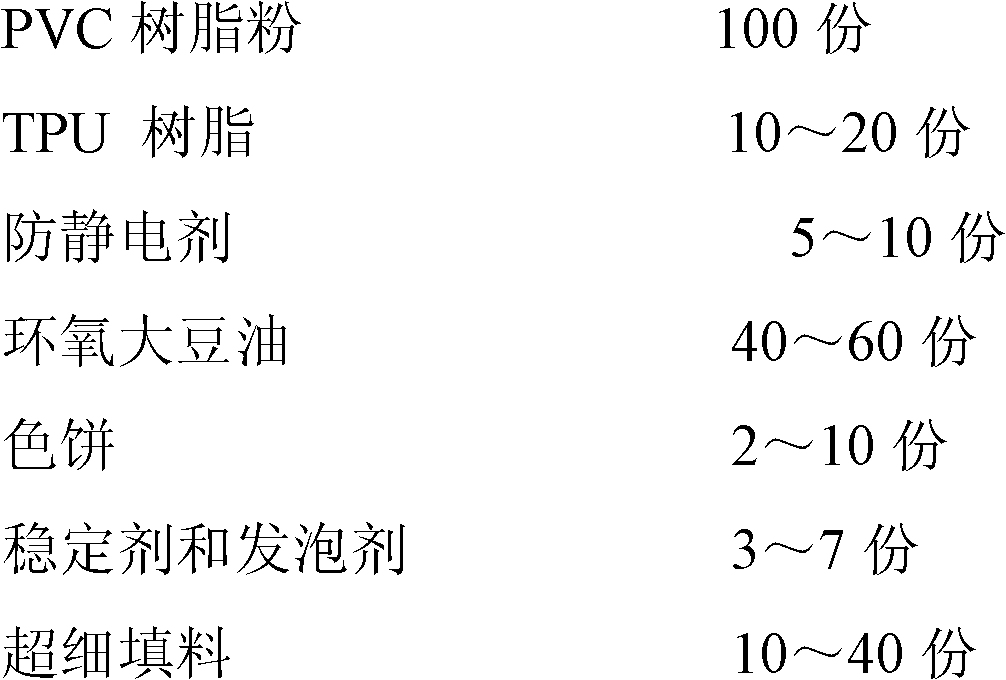Antistatic synthetic leather and preparation method thereof
An anti-static, synthetic leather technology, applied in the field of synthetic leather manufacturing, can solve problems such as hidden dangers, easy to generate static electricity, etc.
- Summary
- Abstract
- Description
- Claims
- Application Information
AI Technical Summary
Problems solved by technology
Method used
Image
Examples
Embodiment 1
[0021] The raw materials of the antistatic slurry and their proportions by weight are: 100 parts of PVC resin powder, 15 parts of TPU resin, 8 parts of antistatic agent (composite of quaternary ammonium salt cationic surfactant and nonionic surfactant), 50 parts of epoxy soybean oil, 5 parts of color cake, 2 parts of potassium zinc stabilizer, 2 parts of azodicarbonamide, 30 parts of 2000 mesh superfine calcium carbonate.
[0022] According to the ingredients, the above-mentioned materials measured are input into the high-speed mixer through the pulse feeder, and the temperature is controlled at 100-150 ° C. After fully stirring, they enter the internal mixer, and the temperature is controlled at (150 ° C) for several minutes; After the base material (various fabrics) is opened, apply PU slurry (150°C), combine the fully mixed material with the base material with PU slurry, enter the second rolling mill (160°C) for kneading, and then After entering the four-roll calender (temp...
Embodiment 2
[0025] The raw materials of the antistatic slurry and their proportions by weight are as follows: 100 parts of PVC resin powder, 18 parts of TPU resin, 6 parts of antistatic agent (composite of quaternary ammonium salt cationic surfactant and nonionic surfactant), 25 parts of epoxy soybean oil, 8 parts of color cake, 3 parts of barium zinc stabilizer, 2 parts of azodicarbonamide, 20 parts of 2000 mesh superfine calcium carbonate.
[0026] According to the ingredients, the above-mentioned materials measured are input into the high-speed mixer through the pulse feeder, and the temperature is controlled at 100-150 ° C. After fully stirring, they enter the internal mixer, and the temperature is controlled at (160 ° C) for several minutes; After the base material (various fabrics) is opened, apply PU slurry (150°C), combine the fully mixed material with the base material with PU slurry, enter the second rolling mill (160°C) for kneading, and then After entering the four-roll calend...
PUM
| Property | Measurement | Unit |
|---|---|---|
| elongation at break | aaaaa | aaaaa |
| elongation at break | aaaaa | aaaaa |
| elongation at break | aaaaa | aaaaa |
Abstract
Description
Claims
Application Information
 Login to View More
Login to View More - R&D
- Intellectual Property
- Life Sciences
- Materials
- Tech Scout
- Unparalleled Data Quality
- Higher Quality Content
- 60% Fewer Hallucinations
Browse by: Latest US Patents, China's latest patents, Technical Efficacy Thesaurus, Application Domain, Technology Topic, Popular Technical Reports.
© 2025 PatSnap. All rights reserved.Legal|Privacy policy|Modern Slavery Act Transparency Statement|Sitemap|About US| Contact US: help@patsnap.com



